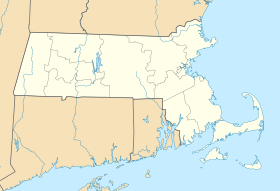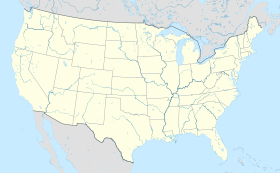Breakheart Reservation
| Breakheart Reservation | |
| Metropolitan Park System of Greater Boston | |
|
Breakheart's swimming area beyond the loop roadway
|
|
| Nickname: Breakheart | |
| Country | United States |
|---|---|
| State | Massachusetts |
| Counties | Essex, Middlesex |
| Towns | Saugus, Wakefield |
| River | Saugus |
| Elevation | 131 ft (40 m) |
| Coordinates | 42°29′21″N 71°02′23″W / 42.48917°N 71.03972°WCoordinates: 42°29′21″N 71°02′23″W / 42.48917°N 71.03972°W |
| Area | 652 acres (264 ha) |
| Established | 1934 |
| Management | Massachusetts Department of Conservation and Recreation |
| Website: Breakheart Reservation | |
|
Breakheart Reservation Parkways
|
|
| Location | Saugus and Wakefield, Massachusetts |
| Built | 1934 |
| Architect | Charles Eliot |
| MPS | Metropolitan Park System of Greater Boston MPS |
| NRHP Reference # | 03000748 |
| Added to NRHP | August 11, 2003 |
Breakheart Reservation is a public recreation area covering 652 acres (264 ha) in the towns of Saugus and Wakefield, Massachusetts. The reservation features a hardwood forest, two freshwater lakes, a winding stretch of the Saugus River, and scenic views of Boston and rural New England from rocky hilltops. The park is managed by the Massachusetts Department of Conservation and Recreation.
Archaeological evidence shows that hunting, camping, and fishing took place along the Saugus River as far back as the Paleo-Indians and continuing through the Archaic and Woodland periods.
In 1666, John Gifford, the second general agent of the Saugus Iron Works, who had left the company over a dispute with its creditors, purchased 260 acres along the Saugus River from Thomas Breedon of Boston for £260. He established his own iron works on the site, which closed in 1675 due to the economic downturn caused by King Philip's War. Gifford's site later housed a sawmill (1703–1740), wire-manufacturing operation (1814–1828), a snuff-grinding mill (1837–1871), and a second sawmill (1871–1902).
In 1706, the land (known as the Six-Hundred Acres) was divided among the male settlers. During the 18th and 19th centuries, the land remained largely unchanged. Most of the land was passed down through the same families. Most landowners resided off of the property and used the land for firewood, if at all.
In 1814, a fieldstone milldam was constructed downstream from the Gifford site to provide power for the Linen and Duck Manufactory Company of Boston. The mill closed after the War of 1812 due to a decline in the demand for sailcloth; however, the dam still exists.
...
Wikipedia




